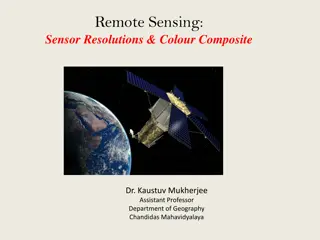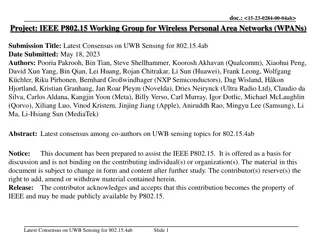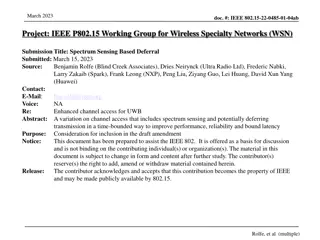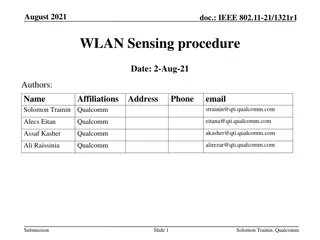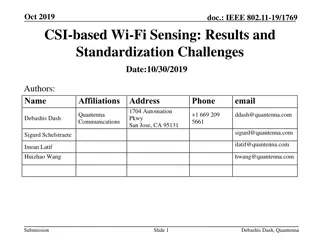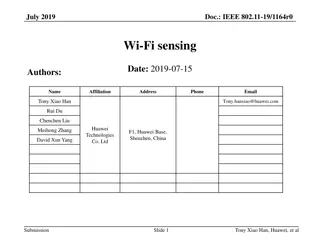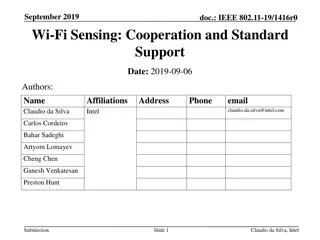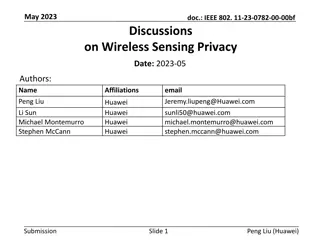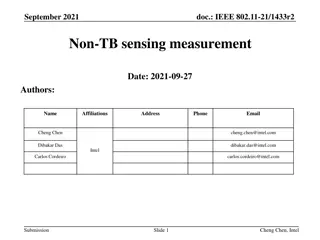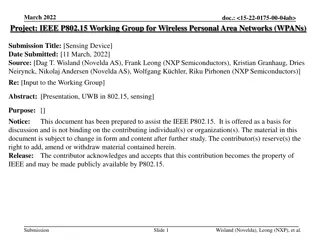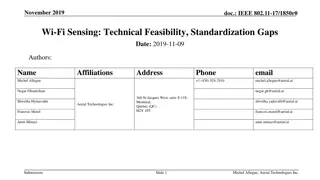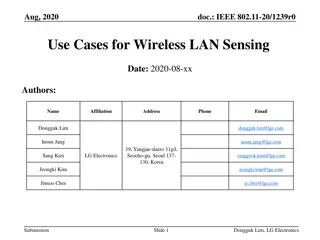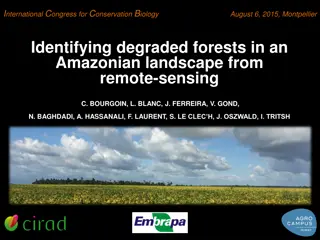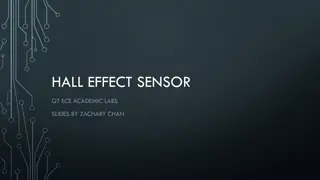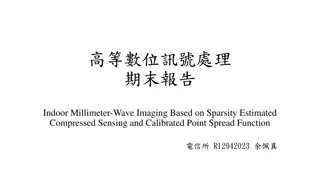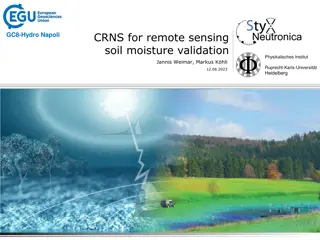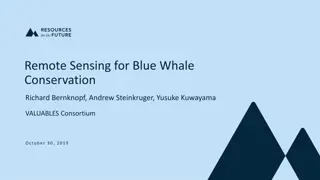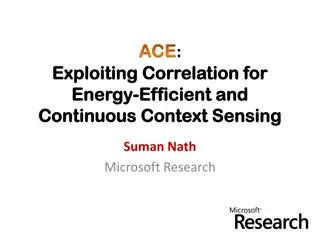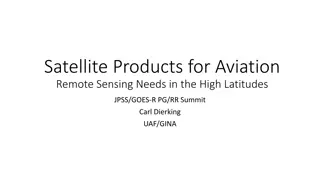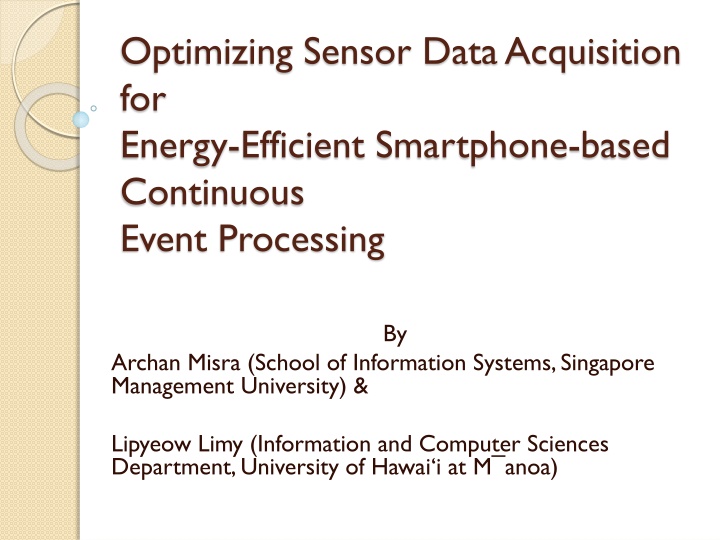
Energy-Efficient Smartphone Sensor Data Optimization
Explore how to reduce energy consumption in smartphone sensor data acquisition for continuous event processing. Learn about the ACQUA model and the shift from push to pull sensor data transmission.
Download Presentation

Please find below an Image/Link to download the presentation.
The content on the website is provided AS IS for your information and personal use only. It may not be sold, licensed, or shared on other websites without obtaining consent from the author. If you encounter any issues during the download, it is possible that the publisher has removed the file from their server.
You are allowed to download the files provided on this website for personal or commercial use, subject to the condition that they are used lawfully. All files are the property of their respective owners.
The content on the website is provided AS IS for your information and personal use only. It may not be sold, licensed, or shared on other websites without obtaining consent from the author.
E N D
Presentation Transcript
Optimizing Sensor Data Acquisition for Energy-Efficient Smartphone-based Continuous Event Processing By Archan Misra (School of Information Systems, Singapore Management University) & Lipyeow Limy (Information and Computer Sciences Department, University of Hawai i at M anoa)
Introduction Smartphones already have several on-board sensors (e.g., GPS, accelerometer, compass and microphone) But, there are many situations where the smartphone aggregates data from a variety of other specific external medical (e.g., ECG, EMG, Sp02) or environmental (e.g., temperature, pollution) sensors, using a Personal Area Network (PAN) technology, such as BluetoothTM, IEEE 802.15.4 or even WiFi (IEEE 802.11).
Key Idea This work explores an approach to reduce the energy footprint of such continuous context-extraction activities, primarily by reducing the volume of sensor data that is transmitted wirelessly over the PAN interface between a smartphone and its attached sensors, without compromising the fidelity of the event processing logic. More specifically, the authors aim to replace the push model of sensor data transmission, where the sensors simply continuously transmit their samples to the smartphone, with a phone-controlled dynamic pull model, where the smartphone selectively pulls only appropriate subsets of the sensor data streams.
ACQUA Introducing a new continuous stream processing model called ACQUA (Acquisition Cost-Aware Query Adaptation), Which first learns the selectivity properties of different sensor streams and then utilizes such estimated selectivity values to modify the sequence in which the smartphone acquires data from the sensors.
IEEE 802.11: Bluetooth:
Query Consider a hypothetical activity/wellness tracking application that seeks to detect an episode where an individual walks for 10 minutes, while being exposed to an ambient temperature (95th percentile over the 10 minute window) of greater than 80F, while exhibiting an AVERAGE heart rate (over a 5 minute window) of > 80 beats/min.
Assume that this application uses an external wrist-worn device, equipped with accelerometer (sensor S1, sampling at 100 samples/sec), heart rate (S2, sampling at 1 sample/sec) and temperature (S3, sampling at 1 sample/sec) sensors.

